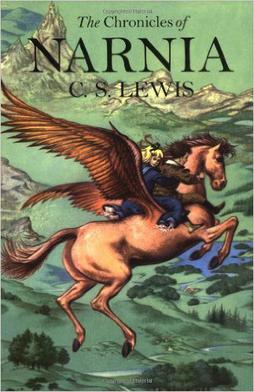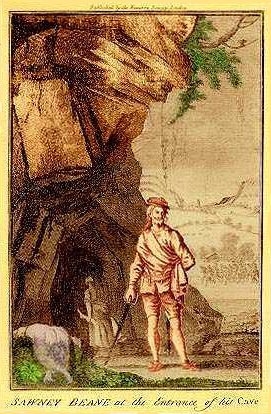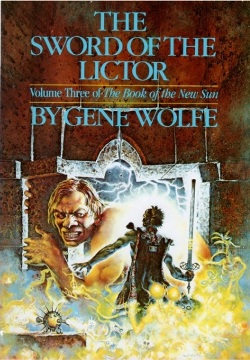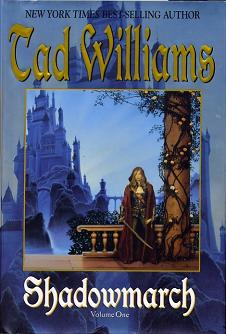
The Chronicles of Narnia is a series of seven portal fantasy novels by British author C. S. Lewis. Illustrated by Pauline Baynes and originally published between 1950 and 1956, The Chronicles of Narnia has been adapted for radio, television, the stage, film and video games. The series is set in the fictional realm of Narnia, a fantasy world of magic, mythical beasts and talking animals. It narrates the adventures of various children who play central roles in the unfolding history of the Narnian world. Except in The Horse and His Boy, the protagonists are all children from the real world who are magically transported to Narnia, where they are sometimes called upon by the lion Aslan to protect Narnia from evil. The books span the entire history of Narnia, from its creation in The Magician's Nephew to its eventual destruction in The Last Battle.

Gene Rodman Wolfe was an American science fiction and fantasy writer. He was noted for his dense, allusive prose as well as the strong influence of his Catholic faith. He was a prolific short story writer and novelist, and won many literary awards. Wolfe has been called "the Melville of science fiction", and was honored as a Grand Master by the Science Fiction and Fantasy Writers of America.

The Salem witch trials were a series of hearings and prosecutions of people accused of witchcraft in colonial Massachusetts between February 1692 and May 1693. More than 200 people were accused. Thirty people were found guilty, nineteen of whom were executed by hanging. One other man, Giles Corey, died under torture after refusing to enter a plea, and at least five people died in jail.

Alexander "Sawney" Bean is a legendary figure, said to be have been the head of a 45-member clan in Scotland in the 16th century that murdered and cannibalised over 1,000 people in 25 years. According to the legend, Bean and his clan members were eventually caught by a search party sent by King James VI and executed for their heinous crimes.

The Acts of Paul and Thecla is an apocryphal story–Edgar J. Goodspeed called it a "religious romance"–of Paul the Apostle's influence on a young virgin named Thecla. It is one of the writings of the New Testament apocrypha.

The Book of the New Sun (1980–1983) is a four-volume science fantasy novel written by the American author Gene Wolfe. It inaugurated the "Solar Cycle" that Wolfe continued by setting other works in the same universe.

The Shadow of the Torturer is a fantasy novel by American writer Gene Wolfe, published by Simon & Schuster in May 1980. It is the first of four volumes in The Book of the New Sun which Wolfe had completed in draft before The Shadow of the Torturer was published. It relates the story of Severian, an apprentice Seeker for Truth and Penitence, from his youth through his expulsion from the guild and subsequent journey out of his home city of Nessus.

The Citadel of the Autarch is a science fantasy novel by American writer Gene Wolfe, first released in 1983. It is the fourth and final volume in the four-volume series The Book of the New Sun.

The Sword of the Lictor is a science fantasy novel by American writer Gene Wolfe. First released in 1982, it is the third volume in the four-volume series The Book of the New Sun.
The baobhan sith is a female fairy in the folklore of the Scottish Highlands, though they also share certain characteristics in common with the succubus. They appear as beautiful women who seduce their victims before attacking them and killing them.
Severian is the narrator and main character of Gene Wolfe's four-volume science fiction series The Book of the New Sun, as well as its sequel, The Urth of the New Sun. He is a Journeyman of the Seekers for Truth and Penitence who is exiled after showing mercy to one of his clients.

Shadowmarch is a fantasy novel by American writer Tad Williams, the first book in the Shadowmarch tetralogy. It was released in hardcover on November 2, 2004, and in trade paperback on November 1, 2005. A paperback edition was released in September 2006. The second book in the series, Shadowplay was published on March 6, 2007, in hardcover and on March 4, 2008, in paperback in both the US and the UK. The third book in the series, Shadowrise, was released in hardcover on March 2, 2010. The last book in the series, Shadowheart, was published in hardcover on November 1, 2010.
Hercules in the Underworld is the fourth television movie in the syndicated fantasy series Hercules: The Legendary Journeys.

Shadowplay is a fantasy novel by American writer Tad Williams, the second book in the Shadowmarch tetralogy. It was released in hardcover in the US in March, 2007 and has been released with a region-specific hard cover in the United Kingdom. Book one, Shadowmarch, was published in November 2004. Book three of Shadowmarch, Shadowrise was released in March, 2010. A fourth book, Shadowheart, completes the series.

The Year of the Quiet Sun is a 1970 science fiction novel by American writer Wilson Tucker, dealing with the use of forward time travel to ascertain future political and social events. It won a retrospective John W. Campbell Memorial Award in 1976. It was also nominated for a Nebula Award for Best Novel in 1970, and a Hugo Award for Best Novel in 1971.

The Urth of the New Sun is a 1987 science fiction novel by Gene Wolfe that serves as a coda to his four-volume Book of the New Sun series. Like Book of the New Sun, it is of the Dying Earth subgenre. It was nominated for the Hugo Award for Best Novel, Locus Award for Best Science Fiction Novel and the Nebula Award for Best Novel in 1988.

The Bideford witch trial resulted in hangings for witchcraft in England. Temperance Lloyd, Mary Trembles and Susannah Edwards from the town of Bideford in Devon were tried in 1682 at the Exeter Assizes at Rougemont Castle. Much of the evidence against them was hearsay, although there was a confession by Lloyd, which she did not fully recant even with her execution imminent. These women have been labelled as the last witches to be hanged in England, but there are subsequent cases which are not as well documented.

Jungle Tales of Tarzan is a collection of twelve loosely connected short stories by American writer Edgar Rice Burroughs, comprising the sixth book in order of publication in his series of twenty-four books about the title character Tarzan. Chronologically the events recounted in it occur within Chapter 11 of the first Tarzan novel, Tarzan of the Apes, between Tarzan's avenging of his ape foster mother's death and his becoming leader of his ape tribe. The stories ran monthly in Blue Book magazine, September 1916 through August 1917 before book publication in 1919.

Ann Pudeator was a wealthy septuagenarian widow who was accused of and convicted of witchcraft in the Salem witch trials in colonial Massachusetts. She was executed by hanging.

Klaus is a fictional superhero created by writer Grant Morrison and artist Dan Mora. Debuting originally in a seven-issue comic book mini-series published in 2015 and 2016 by Boom! Studios, the character has gone on to star in a number of other stories since. The original miniseries is styled as a sprawling superhero origin story, akin to Batman: Year One, re-imagining Santa Claus as a wild shaman of the winter in the 16th century. Drawing on folklore, westerns, and epic fantasy, Morrison and Mora intended to craft a brand-new sexy Santa for the modern age. The origin chronicles Klaus, a wild man of the winter and the forests on his mission with his pet white wolf Lilli, to restore joy to the sacred holiday of Yuletide. Set in the totalitarian town of Grimsvig, wherein joy is forbidden and Yuletide is outlawed, the series casts Santa Claus as a V for Vendetta and Robin Hood-esque figure, fighting its fascistic Lord Magnus, and the greater demonic force behind him.

















